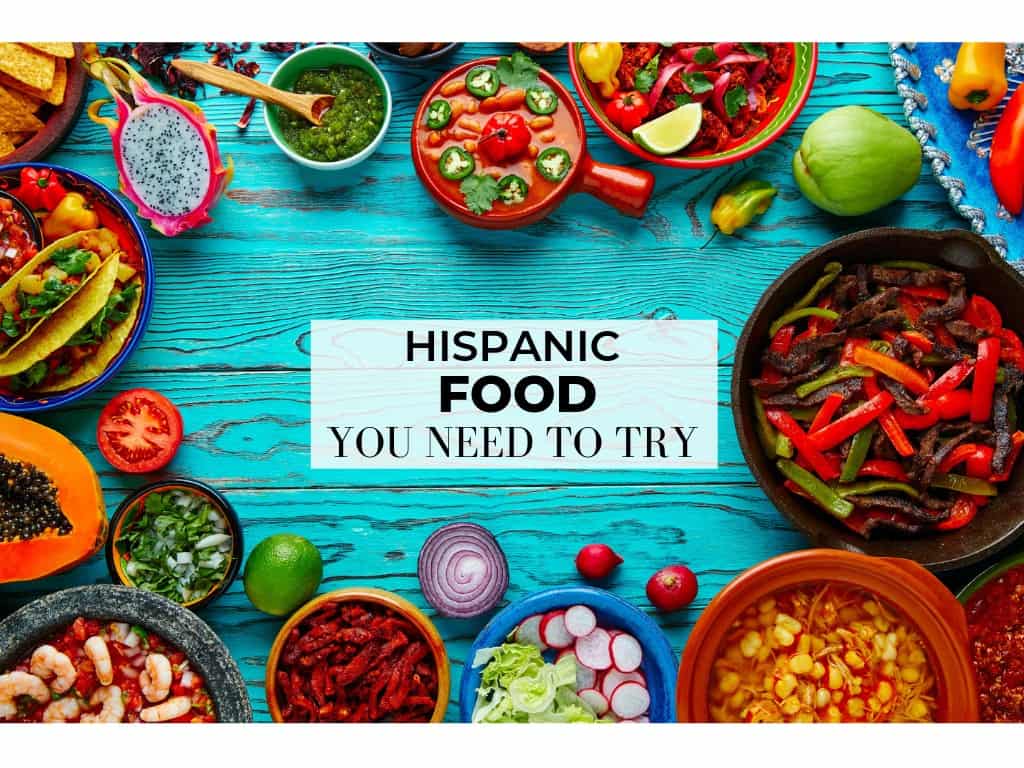Have you ever pondered the distinctions between a sandwich and a taco? And what about the enigmatic hot dog – is it a taco or a sandwich? These intriguing questions have stayed in my mind, particularly when considering one of the most iconic dishes from my country: the beloved “La Arepa.” This article aims to deepen into the most famous hispanic meals, inviting you to discover the fascinating differences while gaining insights into the rich diversity of Hispanic food and its renowned cultural dishes.
Hispanic food is a remarkable cultural manifestation, influenced by many factors. Take, for example, “La Arepa,” a dish hailing from my country Venezuela. Initially, it was considered a humble meal for the lower social classes. However, during the country’s fight for independence, “La Arepa” transformed into an essential sustenance for both troops and the general population, symbolizing resistance and survival. Today, the mere mention of the word “arepa” evokes a profound sense of national identity.
Throughout this article, we will embark on an enticing culinary journey, uncovering the intricate flavors, diverse preparations, and cultural significance of Hispanic gastronomy.
So, whether you find yourself pondering the complexities of a sandwich versus a taco or simply craving a taste of the diverse Hispanic flavors, join us on this enlightening gastronomic adventure. By the end of this article, you’ll not only have a clearer understanding of the differences but also a newfound appreciation for the rich heritage that makes Hispanic food so incredibly vibrant and cherished.
Traditional Hispanic Food To Make
-
- Tequeños (Venezuela): What makes tequeños truly intriguing is their origin. The name itself pays homage to Los Teques, a place in Venezuela where this culinary masterpiece first emerged. But it is the story behind its creation that adds a remarkable touch. Tequeños were born out of resourcefulness when some ingenious service people ingeniously utilized leftover dough and cheese, transforming these humble ingredients into an extraordinary dish.
Today, tequeños have become a symbol of Venezuelan culinary and have found their way into the hearts and palates of people worldwide. Whether enjoyed as a party snack, appetizer, or a comforting treat, these golden, cheese-filled delights never fail to delight.
- Tequeños (Venezuela): What makes tequeños truly intriguing is their origin. The name itself pays homage to Los Teques, a place in Venezuela where this culinary masterpiece first emerged. But it is the story behind its creation that adds a remarkable touch. Tequeños were born out of resourcefulness when some ingenious service people ingeniously utilized leftover dough and cheese, transforming these humble ingredients into an extraordinary dish.
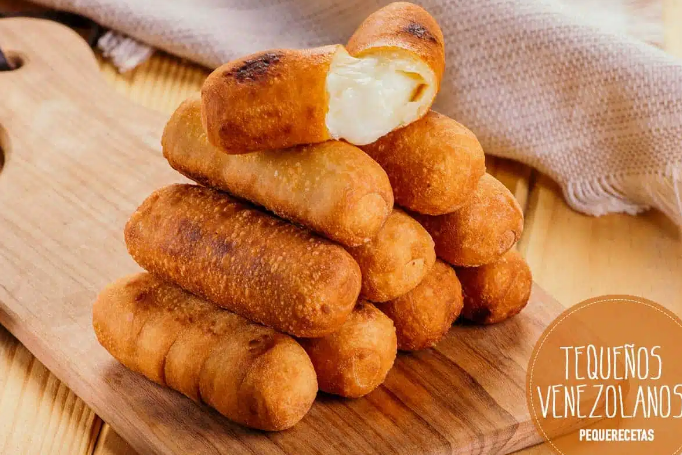
-
-
-
- Pao de Queijo (Brazil): Pão de Queijo is not your typical stuffed pocket bread. Instead, it presents a delightful amalgamation of cheese and dough, creating an indistinguishable mass of pure deliciousness. With the following measurements, you can create your own delectable batch:500g tapioca flour, 250ml milk, 125ml oil, 300g Cheese, 3 eggs and Salt.
Simply combine all the ingredients, mixing them together until a smooth and homogeneous batter forms. The resulting dough should be a harmonious blend of tapioca flour, milk, oil, cheese, eggs, and a pinch of salt.
Now, the secret to achieving the perfect texture and shape lies in a small but significant step. Shape the dough into small balls and then freeze them for approximately 30 minutes. This step ensures that the pão de queijo retains its desired form while baking, resulting in an irresistible golden and crisp exterior.
Once sufficiently chilled, it’s time to bake these delectable morsels to perfection. Place them in the oven and wait for that magical moment when the pão de queijo turns a mouthwatering golden hue.As you bite into these delectable treats, prepare for a taste sensation beyond your wildest dreams. The interior of each pão de queijo should present a molten cheese paradise, blending seamlessly with the tender dough. Each bite delivers a symphony of flavors that will leave you craving for more.
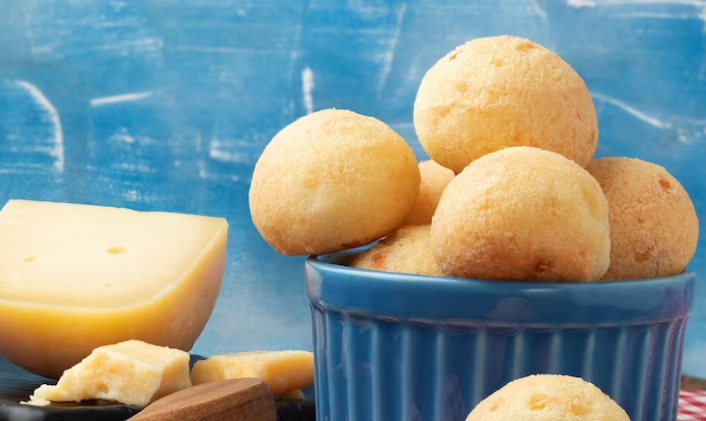
- Asado (Argentina): Asado is more than just a meal in Argentina; it is a social and cultural event that brings families and friends together. It reflects the influence of the gauchos (Argentine cowboys) and their traditional way of cooking meat over open fires on the pampas. This dish is too important that in fact, the second Sunday of August is celebrated as “National Asado Day” (Día del Asado), where people gather with family and friends to enjoy this beloved culinary tradition.
- Pao de Queijo (Brazil): Pão de Queijo is not your typical stuffed pocket bread. Instead, it presents a delightful amalgamation of cheese and dough, creating an indistinguishable mass of pure deliciousness. With the following measurements, you can create your own delectable batch:500g tapioca flour, 250ml milk, 125ml oil, 300g Cheese, 3 eggs and Salt.
-
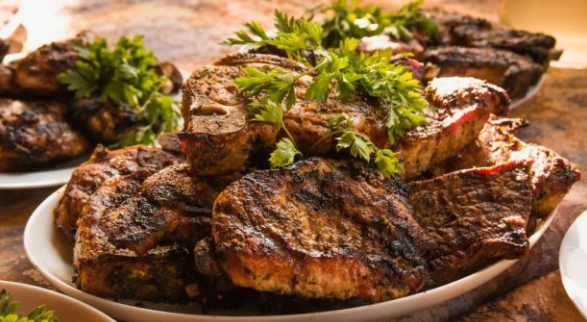
-
-
- Ropa Vieja (Cuba): The name “Ropa Vieja” translates to “old clothes”, as the shredded beef resembles tattered old clothing. The dish has its roots in the Sephardic Jewish communities of medieval Spain and was brought to Cuba by Spanish settlers.
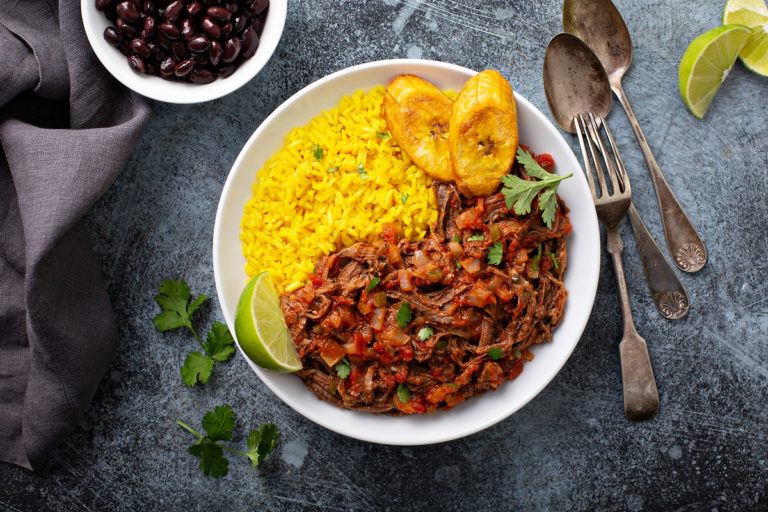
- Ropa Vieja (Cuba): The name “Ropa Vieja” translates to “old clothes”, as the shredded beef resembles tattered old clothing. The dish has its roots in the Sephardic Jewish communities of medieval Spain and was brought to Cuba by Spanish settlers.
Gastronomy Hispanic Wonders
It’s time to practice your Spanish skills! Join us in our Telegram Group to participate in the conversation.
- What is your favorite traditional dish from a Spanish-speaking country, and what do you love about it?
- Have you ever tried cooking a traditional Spanish or Latin American recipe? If so, what was your experience like?
- Which Spanish-speaking country’s cuisine intrigues you the most, and why?
- What role do you think food plays in shaping the cultural identity of a country or region?
- Are there any unique or lesser-known ingredients used in Spanish-speaking cuisines that you find interesting? How would you describe their taste or texture?

